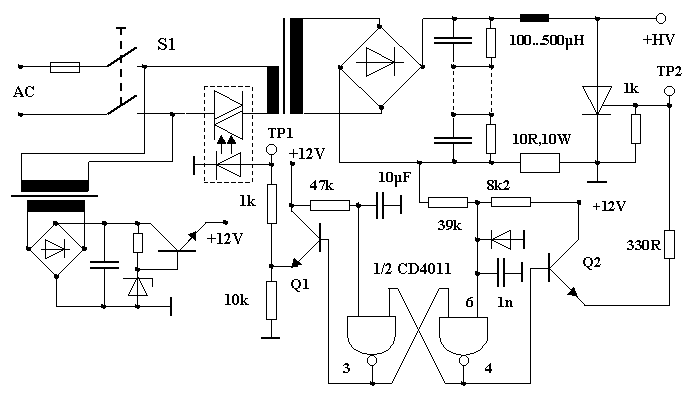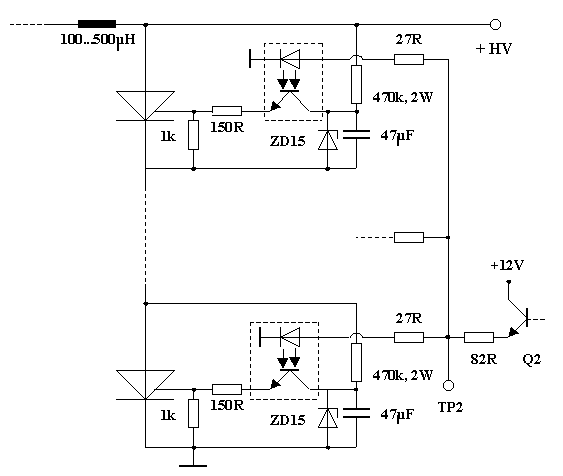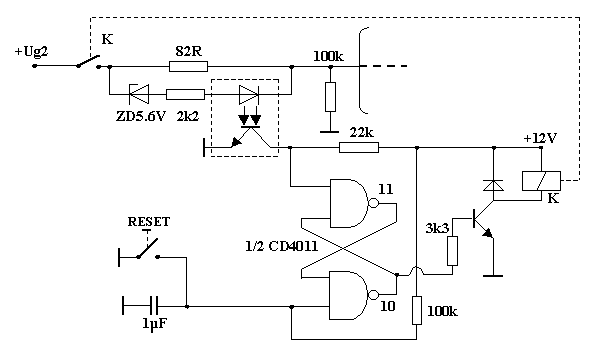Figure 1: Flashover Protection Circuit
Function: Normal operation: Pin 3 of CD4011 is high, transformer on via electronic relay, thyristor (SCR) off. Overcurrent trip: High current in anode circuit caused by arcing or short circuit generates voltage drop across 10Ohm resistor. Flip-Flop toggles (Pin 3 low), switches off transformer and fires SCR to short HV capacitor. For restart one has to switch off S1, the main power supply switch, and switch it on again after a few seconds. The series inductance for SCR protection is made from 10m of enamelled copper wire. Trip current is set by the 39k/8k2 voltage divider. |
Figure 2: Thyristorcascade
Thyristors for voltages >1000 Volts are very expensive. For higher voltages you can use a cascade as shown above in Figure 2. I use four thyristors in series, switched by optocouplers, in my 3.5kV supply. |
Before you test the circuit by producing
a short, you should follow the step by step procedure,
which is outlined as follows:
Figure 3 shows a circuit for screen protection sreen in case of no anode voltage or screen overcurrent. Ig2>100mA will toggle the Flip-Flop via the optocoupler. The relay goes off and disconnects the screen. Voltage comes back after pushing the RESET key. Using the ordinary Z-diode stabilisation, overcurrent is limited to a harmless value during switching delay of the relay. PROCEED WITH CAUTION, THE AUTHOR IS NOT RESPONSIBLE FOR INJURY OR EQUIPMENT DAMAGE. |
Figure 3: Screen protection
|


